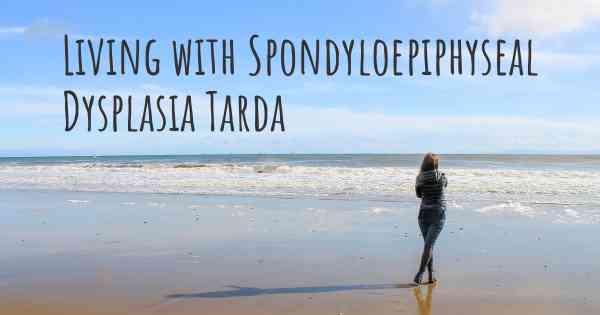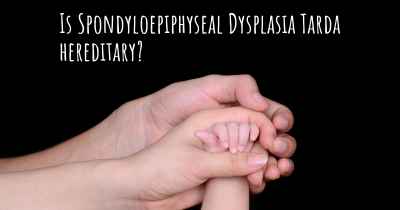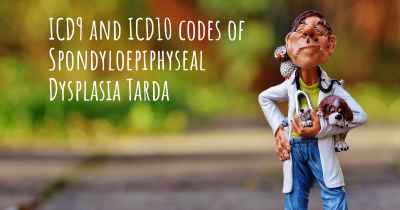Living with Spondyloepiphyseal Dysplasia Tarda. How to live with Spondyloepiphyseal Dysplasia Tarda?
Can you be happy living with Spondyloepiphyseal Dysplasia Tarda? What do you have to do to be happy with Spondyloepiphyseal Dysplasia Tarda? Living with Spondyloepiphyseal Dysplasia Tarda can be difficult, but you have to fight to try to be happy. Have a look at things that other people have done to be happy with Spondyloepiphyseal Dysplasia Tarda

Spondyloepiphyseal Dysplasia Tarda (SEDT) is a rare genetic disorder that affects bone and cartilage development. Individuals with SEDT typically have short stature, abnormal spinal curvature, and joint problems. While living with SEDT can present challenges, there are strategies and support available to help individuals lead fulfilling lives.
Medical Management
It is crucial for individuals with SEDT to have regular medical check-ups and consultations with a team of healthcare professionals. This team may include orthopedic specialists, geneticists, physical therapists, and other specialists who can provide comprehensive care. Regular monitoring of bone and joint health, as well as early intervention for any complications, is essential.
Physical Therapy and Exercise
Physical therapy plays a vital role in managing SEDT. A physical therapist can develop a personalized exercise program to improve strength, flexibility, and mobility. These exercises may focus on core stability, joint mobility, and posture. Regular physical activity can help alleviate pain, improve overall function, and prevent further complications.
Assistive Devices and Mobility Aids
Depending on the severity of symptoms, individuals with SEDT may benefit from using assistive devices and mobility aids. These can include orthopedic braces, canes, walkers, or wheelchairs. These aids can provide support, improve mobility, and reduce the risk of falls or injuries. Working with an occupational therapist can help determine the most suitable assistive devices for daily activities.
Pain Management
Chronic pain is a common symptom of SEDT. Effective pain management strategies can significantly improve quality of life. This may involve a combination of medications, physical therapy, heat or cold therapy, and relaxation techniques. It is important to work closely with healthcare professionals to develop an individualized pain management plan.
Emotional Support and Mental Health
Living with a rare genetic disorder like SEDT can have emotional and psychological impacts. Seeking emotional support from friends, family, or support groups can be beneficial. Connecting with others who have similar experiences can provide a sense of belonging and understanding. Additionally, considering counseling or therapy can help individuals cope with the challenges and maintain positive mental health.
Education and Advocacy
Education about SEDT is crucial for individuals and their families. Understanding the condition, its progression, and available treatments empowers individuals to make informed decisions about their healthcare. Additionally, advocating for oneself and raising awareness about SEDT can help promote research, support, and resources for the community.
Living a Full Life
While SEDT may present physical challenges, it is important to focus on living a full and meaningful life. Pursuing hobbies, interests, and goals can bring joy and fulfillment. Building a strong support network, maintaining a positive mindset, and adapting to challenges can help individuals with SEDT overcome obstacles and thrive.
Posted Sep 29, 2017 by loslolindsay 1400
Posted Oct 29, 2017 by Vegeta 1000








